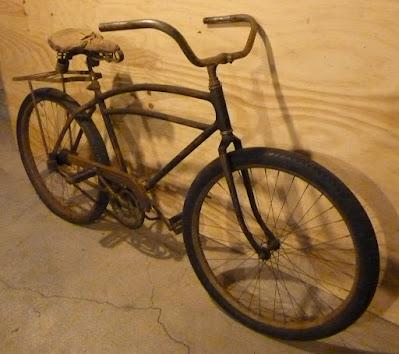Other than the clean look internal cable routing gives a modern bike, I could honestly do without it. More often than not, the process of threading cables through the tubes of a bike frame is a major headache.
Because manufacturers didn’t want to add weight, few modern frames have any type of routing tube or sleeve to aid the threading of the cable between the openings in the frame. Some brands have removable caps which cover larger holes that will allow improved access for fumbling fingers attempting to feed through cables and/or housings.
Thankfully, the 2015 De Rosa 888 Super King R frameset I recently purchased for a friend has a combination of fixed tubes and removable caps. Unfortunately, the tube that would carry the cable under the bottom bracket and up through the base of the seat tube to reach the front derailleur was clogged with greasy grit that had hardened over the years. The previous owner of this frameset had equipped his bicycle with electronic shifting, and had left the unused cable opening exposed to the elements.
The guys at
Bikesport had tried to blow compressed air into the hole, but the blockage didn’t budge. I sprayed in degreaser and attempted to auger out the gunk a little bit at a time with threaded end of an old spoke. The problem was the rigid spoke could only reach so far – I needed something flexible to “go around the bend”. I called a couple different bike shops and stopped by the local hardware store to inquire about possible solutions, but no one could help.
I then had a “eureka moment” when I thought of taking an older brake cable, which is slightly thicker than modern cables, cutting it to about an 8-inch length and inserting one end into a drill. I took a small screwdriver and frayed the end a bit to create a burr that would do a better job of breaking up debris. I began by alternating drilling for a few minutes with sessions of flushing each end with Simple Green.
I later found that by removing a couple adjacent strands of the cable, I had created a screw shape that would more effectively move the liquid and gunk out of the hole. After a few more minutes of drilling, my frayed-cable-auger-invention popped through the other side!
My plan is to disassemble the
Saeco/Cannondale Team bike, which unfortunately hasn’t sold after a year on the market, and use the Dura-Ace parts on the De Rosa. I’m going to downgrade the components, rebuild the Cannondale and (hopefully) sell it at a more affordable price point.
I had also purchased a 2002 LOOK KG 281 for my friend to sample, in case he liked the idea of something lightweight but with more of a vintage look, but I suspect the super lightweight modern De Rosa might be more to his taste. The LOOK does have a nice Campagnolo 9-speed group, and I have a set of carbon Spinergy wheels, set aside from my Pinarello Prince purchase last spring, that will shed some weight from the traditional aluminum rim/steel spoke Mavic Classic Elite set that came with the bike.
I ended up selling the carbon Nashbar bicycle, not only because I had an eager buyer, but also because the
legends graphics plan I shared previously had proven troublesome. I couldn’t figure out an effective way to do the rider decals on the black bicycle – if I did the decals in a lighter color, they appeared in negative. I really needed to put the black images on a lighter color.
My solution was to purchase an inexpensive Battaglin Speed aluminum frame. The color scheme is really kinda boring, so I’m going to strip it and eventually have Bruce do a bright red paint job on it. I’m going to call the model “Speed CE” (Cobbles Edition), as all the images will be of those who have won Flanders/Roubaix multiple times.
By the way, I have new artwork of Johan Museeuw (on right), which I find more visually interesting than the version I had created earlier.
Now that we are clawing our way out of winter, I have a series of bicycle rides in the works, which I am calling “Cycle Tech Sojourns”. I have come up with ten different events so far, but I’m not sure I will be able to squeeze all of them in this year – and I certainly don’t expect anyone to attend all of them, though you certainly are welcome to try!
Some of the routes, such as those through the Oley Valley and Brandywine Creek areas, have become semi-regular trips with my usual riding crew, and most others, like New York’s
Croton Aqueduct Trail and Jersey’s
Paulinskill/Sussex Trails, have been featured in blog entries. Yes, some transportation and/or carpooling may need to be planned, but the routes are all well worth the drive. I will be giving a more in-depth description of the planned events next blog entry, and hopefully have a date or two scheduled.
I'll bid adieu this week with photos of the Eddy Merckx Elite bicycle that I finished up a few days ago - it's now listed on the "
For Sale" page.





















